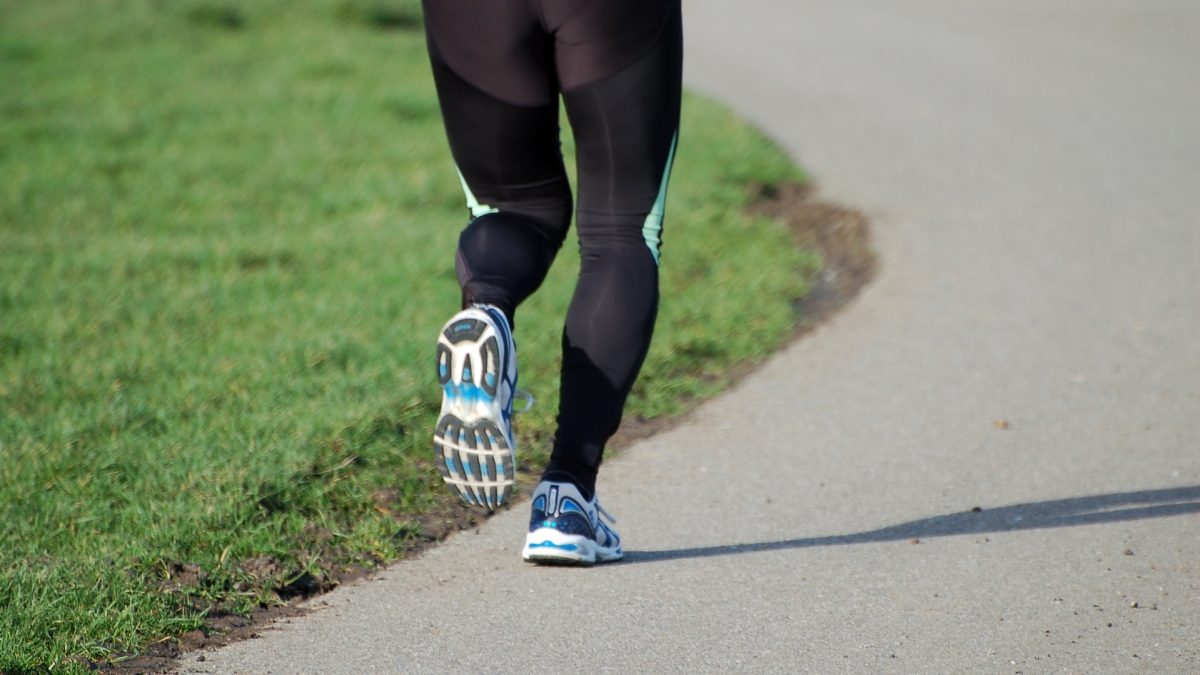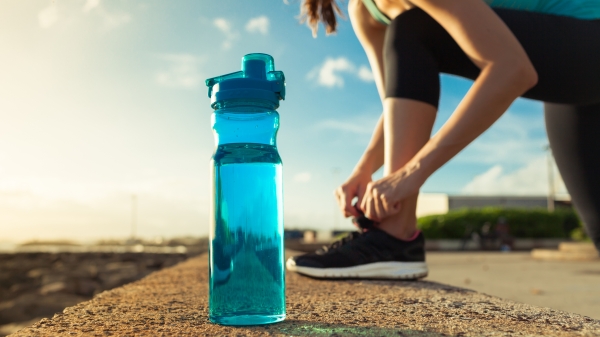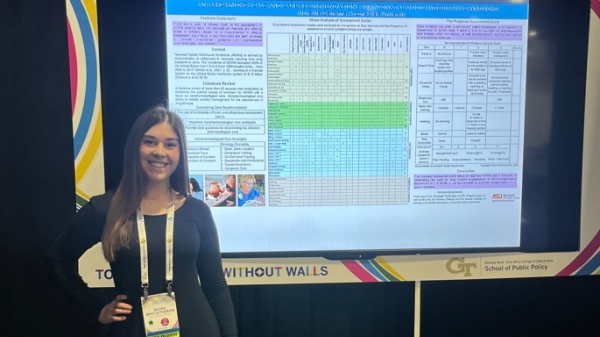Diagnosing which health gadgets really work
From devices that track your steps to apps that monitor heart health, the market is flooded — and an ASU spinoff aims to help health providers know which pass the test

Can an algorithm be sued for malpractice?
That’s one of the galaxy of questions associated with connected health, a new field exploring health care through technology.
Smartphone apps for health and fitness. “Smart” pill bottles that light up a bright red light when someone forgets his medication. Sick people being treated by any doctor because their medical records are in the cloud, accessible by iPad. A health data monitor sending out warnings of possible air contamination if a lot of people in a neighborhood begin coughing.
That’s the Jetsons picture of a connected health future.
“That’s not happening yet,” said Heather Ross, a nurse practitioner in cardiac electrophysiology, doctoral candidate in Human and Social Dimensions of Science and Technology, and faculty member in the Doctor of Nursing Practice program at Arizona State University.
More than 100,000 health apps are available in the iTunes and Google Play stores, according to a recent New York Times story that reported on the New England Journal of Medicine sounding an alarm about them. Many apps’ fine print claims they are for entertainment purposes only. The market is flooded with wearable medical devices, ranging from watches, glasses and implants to headsets and patches.
How can a doctor recommend an app or a device to a patient without wading through a sea of junk?
That’s where a new partnership comes in, between an ASU spinoff company and a French health-care market research company that helps pharmaceutical, biotech and medical-device companies build successful brands.
The partnership announced the findings of its first joint study at a conference in Washington, D.C., in November.
HoneyB Health spun off of an ASU project that conducted clinical trials testing the utility of commercial wearable devices with scientific methodology. The company’s database of information about devices, applications and user experiences gives users — people, patients, providers, health systems and companies — a tool to understand and more effectively employ connected health technologies.
Like its namesake, which comes back to the hive to let the other bees know how good a particular flower is, HoneyB Health’s database lets doctors know which devices are good.
“How do we find that signal and is it a good signal, and how do we use that signal — what’s the benefit?” said HoneyB Chief Executive Officer and founder Michael Birt, who is also director of the Center for Sustainable Health at ASU’s Biodesign Institute.
Birt describes connected health as “keeping people out of the hospital in the first place.” Technology’s role will be to identify, predict and intervene
“Connected health will connect people to the kinds of services and care they need without having to go to a clinic or a hospital to get everything done,” he said. “It’s pushing services out to people where they live and work, rather than thinking of it as, ‘Come to a hospital when you feel bad and we’ll take care of your disease.’ The real motive behind connected health is to keep people healthy rather than treating them for diseases.”
A pilot program run by the Center for Connected Health and Partners Home Care monitored more than 500 heart-failure patients remotely through the collection of vital signs — including heart rate, blood pressure and weight — using simple devices. The information was sent daily to a home-health nurse, who could identify early warning signs, notify the patient's primary-care physician and intervene to avert potential health crises. The result was reduced hospitalizations, according to a 2007 study.
“Where the field is remains aspirational,” Ross said. “A lot of people are talking about it, but nobody’s really doing it in a broad way.”
A host of questions remains to be answered, Ross said. Workforce: Health care is strained enough; who will be there to monitor alarms at 3 a.m.? Legal: If someone gets sick or dies, can you sue an app developer? Engineering: Existing devices are not terribly sophisticated.
“Those are interesting questions to raise,” Ross said.
Out of 268 devices tested by HoneyB, they validated 23 of them. The need to know what’s good and what’s not is huge in a field Ross described as nascent.
“At the practitioner level, a tool to help practitioners leverage the technology is a useful thing,” she said. “Most of these devices are consumer-grade devices, totally unregulated. Nobody else is aggregating all the information about these devices. I think if clinicians want to use these wearable devices, I think they need to know what is the right device for this patient.”
When it comes to connected health, one size does not fit all. Patients need guidance on which apps or devices they should use.
“Ultimately, the purpose of the alliance between Ipsos Healthcare and HoneyB Health is to guide development in the sector so that new technology is optimized for users and health-care practitioners alike,” said Michael Spedding, global CEO of Ipsos Healthcare. “With a better and more comprehensive understanding of connected health technology in the lives of people living with diseases, we can inform product design and utility — as well as incorporate findings into other industries such as pharmaceutical research.”
Populations are aging, and health care needs to get cheaper. It is projected that connected health can improve general wellness, drive efficiency in health-care systems and enhance the effectiveness of treatments by monitoring how effective they are.
The biggest barriers, according to Spedding, are mind-set and knowledge (there’s too much out there, and data privacy and technology accuracy are big concerns) and infrastructure — think of the early days of the Internet, when warring document and video platforms made surfing the Web more of an annoyance than anything else.
Innovation needs to be responsible, Ross said.
“We don’t want technologies that raise really harrowing questions we haven’t started to deal with,” she said.
Learn more about HoneyB Health here.
More Health and medicine

Tips for staying hydrated during Pat's Run and other outdoor activities
By Aidan Hansen Staying hydrated and listening to your body during outdoor exercise activities is crucial to one's health and safety, especially in warm climates. And with the average daytime high…

Fitness helped combat vet, ASU alum readjust to civilian life
By Aidan Hansen Army combat veteran and Arizona State University College of Health Solutions alumni Rich Mulder found fitness helped him transition back to civilian life. Now he supports his fellow…

Nursing student wins top award for research on neonatal opioid withdrawal
An experience Moira MacCatherine had as a teenager volunteering in a Level III neonatal intensive care unit impacted her in such a way that it would later inspire her research as a nursing major at…